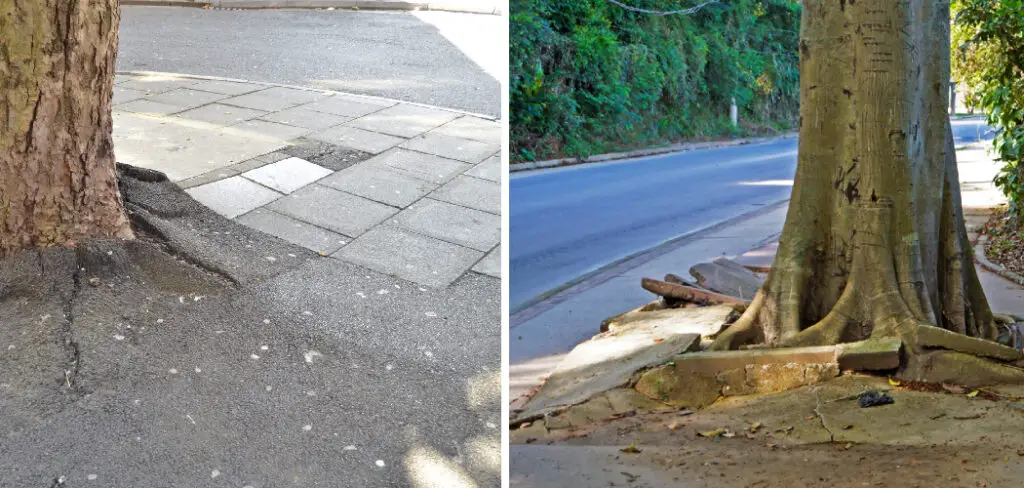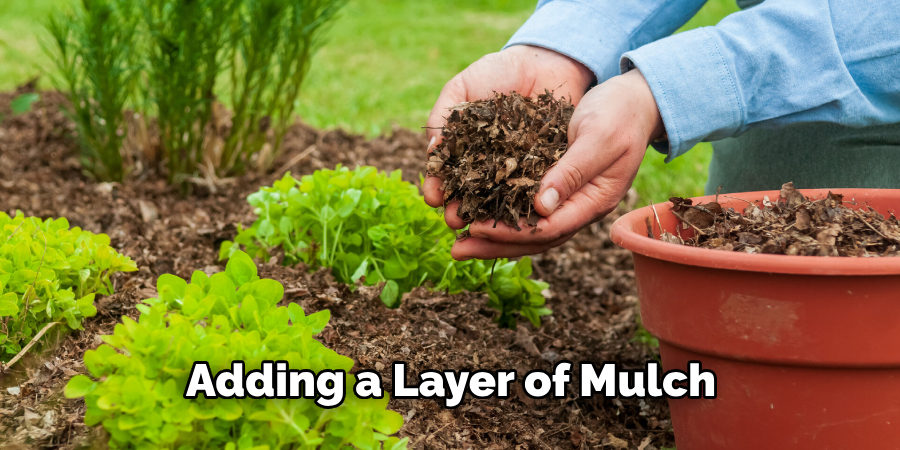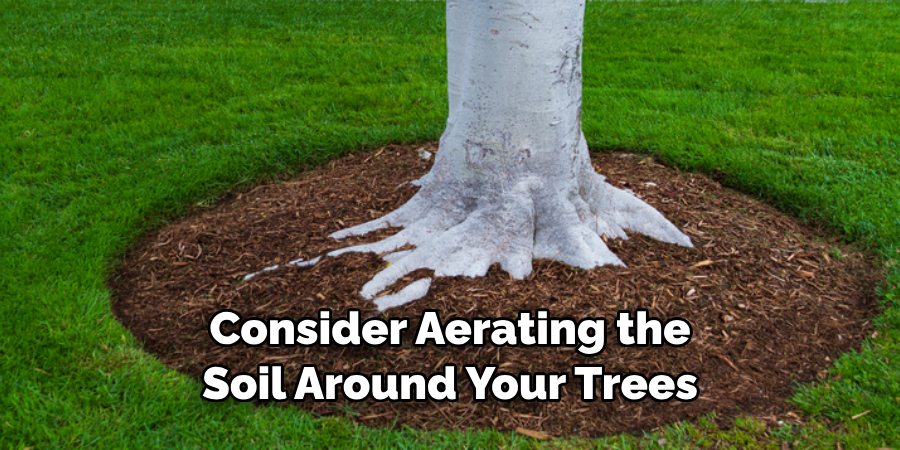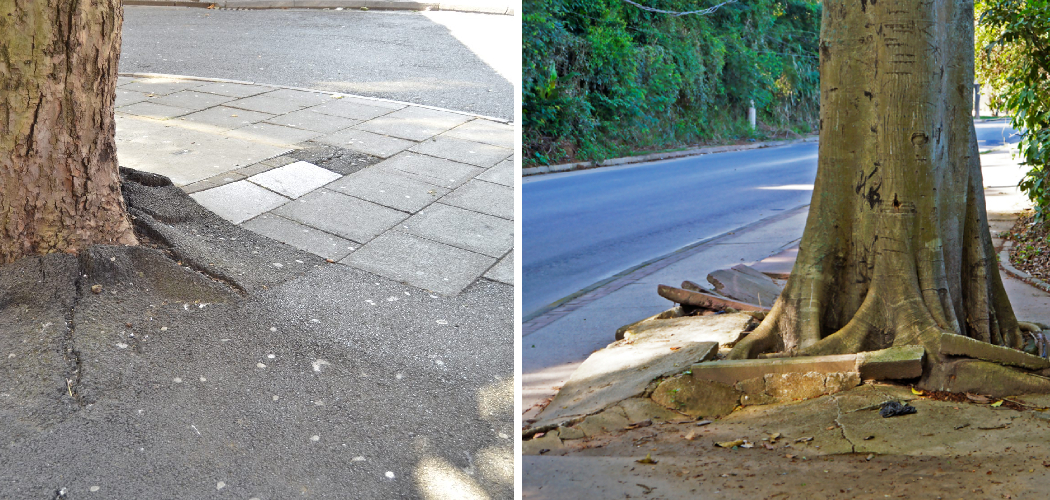Are you dealing with tree roots growing through your concrete driveway or sidewalk? If you’ve ever had a tree in the yard of your home and noticed its roots breaking up parts of your concrete driveways, sidewalks, or foundations, then you know how frustrating this can be. If so, you know the damage that these unwelcome intruders can cause – but there’s good news!

Preventing and controlling tree root growth around your concrete surfaces doesn’t have to be a daunting task. In this blog post, we provide helpful tips on how to keep tree roots from breaking into the concrete and causing costly damage. From pruning trees properly to investing in professional root barriers, learn all of our best practices for protecting your concrete surfaces from intrusive tree roots. In this blog post, we’re going to discuss how to keep tree roots from breaking concrete so that your walkways and other surfaces remain intact!
Why Tree Roots Break Concrete?
1. For Nutrients
Tree roots have an affinity for water and nutrients, so they naturally seek them out in the soil. As the tree’s root system continues to grow beneath the surface of your concrete walkways or driveways, it will eventually come into contact with them. Over time, this can cause cracking, displacement, and lifting of your concrete surfaces as the roots continue to grow and expand.
2. Poor Drainage
Poor drainage due to clay soils or other water-retention issues can also result in tree roots pushing against the concrete, causing disruption of its surface. This is why it’s important to ensure your soil has proper drainage before planting a large tree near your home’s concrete surfaces.
3. Poor Pruning
Trees should be pruned properly to help control their root systems and encourage horizontal growth rather than vertical. If your tree isn’t pruned correctly, it can cause the roots to grow aggressively and break up your concrete surfaces in the process.
4. Intense Weather Changes
Intense weather changes can also affect the way that tree roots react to concrete surfaces. When the weather is hot and dry, the roots will search for moisture beneath the surface of your driveway or sidewalk, which can cause them to lift up and break into it. On the other hand, when there’s too much rainfall or humidity in the air, this can also affect tree root growth and result in damage to your concrete surfaces.
Required Items for Tree Root Management
1. Pruning Tools
Having the right pruning tools on hand is important when managing tree roots near concrete surfaces. Handheld pruners, loppers, and saws are all necessary items for keeping your trees healthy and well-maintained, which will prevent root growth from becoming too aggressive.
2. Root Barriers
Root barriers are essential for preventing roots from intruding into your concrete surfaces and causing damage. These barriers can be made of plastic, metal, or even special fabrics that are designed to keep root growth at bay. Investing in a quality root barrier is the best way to protect your driveway or sidewalk from intrusive tree roots.
3. Mulch
Adding a layer of mulch around your tree’s root system can help keep moisture in the soil and prevent it from drying out too quickly. This will also help provide an additional barrier between the roots and your concrete surfaces, reducing the chances of intrusive root growth.

10 Ways How to Keep Tree Roots From Breaking Concrete
1. Prune Trees Properly
Using the right pruning technique can help control your tree’s growth and keep its root system from breaking into the concrete. When pruning, start by removing any dead or damaged branches and then shape the canopy of the tree to create a uniform structure. Proper pruning can help the tree reach its full potential in an organized way while preventing its root system from disrupting nearby concrete.
2. Limit Fertilizer Use
Too much fertilizer can cause trees to grow faster and become more aggressive in search of nutrients. If possible, limit fertilizer use around your trees or switch to a slow-release formula that will provide nutrition at a steady and safe rate.
3. Plant Trees in the Right Spot
When planting trees, choose a spot that’s far away enough from any concrete slabs or walkways to minimize their roots’ impact on them. For larger trees, consider planting them in a large pot which will help contain their root system and keep it from growing into nearby foundations or walkways.

4. Mulch Around Trees
Mulching is an effective way of providing trees with the nutrients they need without risking their roots growing too close to concrete surfaces. Applying a layer of organic mulch around your tree will help create a nutrient-rich environment while also suppressing weed growth, which can disrupt and damage nearby concrete slabs or foundations.
5. Install a Root Barrier
For trees that are already planted close to concrete, installing a root barrier can be an effective way of controlling its growth and protecting the nearby surfaces from damage. Root barriers can be installed in various ways, including metal grates or underground plastic sheets, depending on the specific needs of your tree.
6. Reduce Compacted Soil
Compacted soil can restrict a tree’s growth and cause its roots to become aggressive, leading them to break through nearby concrete surfaces. To help minimize this risk, consider aerating the soil around your trees at least once a year or try using mulches that can improve the texture of the soil and reduce compaction.

7. Avoid Over-watering
Over-watering can cause a tree’s root system to become too aggressive in search of moisture, leading them to break through nearby concrete surfaces. To help prevent this from occurring, make sure that you provide your trees with only the amount of water they need and avoid overwatering them.
8. Install a French Drain
Installing a French Drain can help improve the drainage of the soil around your trees and prevent waterlogging, which can cause tree roots to become too aggressive in search of moisture. Installing a French Drain is also an effective way of helping protect concrete surfaces from damage caused by trees’ root systems.
9. Provide Proper Support
Trees are tall and heavy plants that can easily cause damage to nearby concrete surfaces if they don’t have proper support. To help prevent this from occurring, consider using stakes and guying systems that can provide your tree with adequate support and keep it from leaning into or disrupting any surrounding slabs or foundations.
10. Regularly Inspect Trees and Concrete Surfaces
It’s important to regularly inspect both trees and concrete surfaces to ensure that their root systems aren’t causing any damage. If you notice any signs of disruption or cracks in the concrete, take immediate action, such as pruning or installing a root barrier to help prevent further damage from occurring. Additionally, make sure to contact an arborist if your tree is too large or complex for you to handle on your own.
With the right care and maintenance, you can prevent trees’ root systems from breaking into concrete surfaces and protect them for years to come.
5 Safety Precautions to Take
- Know the size and location of tree roots. Tree roots naturally grow toward underground sources of water like pipes, drains, or cracks in concrete. Be sure to check the area around your house for any trees with large roots before planting new ones. This will help you avoid making any mistakes that could lead to future problems.
- Minimize soil compaction. Compacted soil can restrict a tree root’s ability to spread out and cause problems with the concrete. Try not to walk over or around the tree roots, as this can compact the soil and lead to the cracking of concrete slabs.
- Make sure your drainage is adequate. If you have poor drainage in your area, it could cause tree roots to expand and crack concrete. Make sure your drainage is adequate and that the area around the tree is well-drained.
- Avoid planting trees too close to the house or driveway. Planting a tree closer than 6 feet from any structure or pavement can be risky, as it increases the chances of root damage due to proximity to these hard surfaces.
- Add soil amendments to the area around the tree. Adding organic material such as compost or mulch can help improve drainage and aeration in the soil. This will give roots more room to spread out and make it less likely that they’ll break through concrete.

Conclusion
Overall, the key to preventing tree roots from breaking concrete is to proactively manage them. Regularly monitoring and pruning the roots can help maintain a healthy environment for your trees while minimizing damage to your driveway or other hardscapes over time. It’s worth taking the time to ensure that tree roots don’t become a problem in the future – with a few simple proactive steps, you can protect your driveway and allow your trees to flourish without worry!
If you have any further concerns or questions about managing tree roots and their effect on your concrete, please do not hesitate to talk to an experienced arborist or landscaper who can guide you toward the best possible solution. Taking the necessary precautions now will result in better peace of mind in the long run. Following these steps on how to keep tree roots from breaking concrete can help you keep tree roots from breaking through concrete and ensure that your trees remain healthy for years to come.


